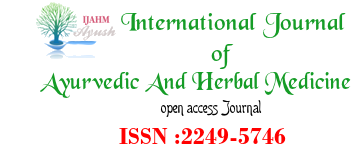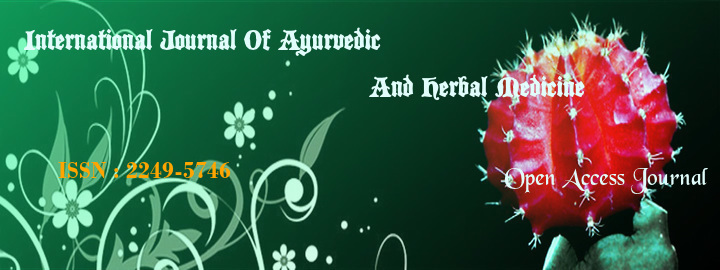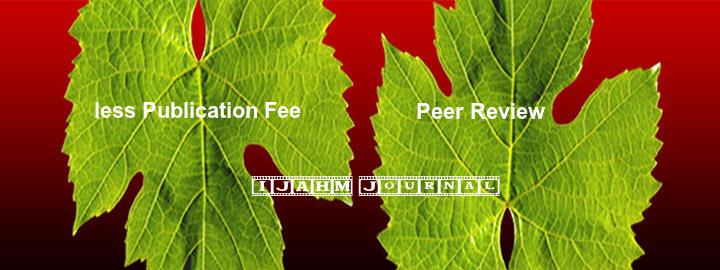


1Dr. D.B. More, 2Pranali S. Giradkar
DOI : http://dx.doi.org/10.31142/ijahm/v10i2.04
1Assistant Professor (Dravyaguna), Government Ayurvedic College, Osmanabad, Maharashtra. 413501
2PG Scholar (Dravyaguna), Government Ayurvedic College, Osmanabad, Maharashtra. 413501
Abstract:
Ayurveda has gained popularity in recent years. People have developed an interest in traditional medicine due to the side effects of synthetic drugs. Herbal drugs being the base of traditional medicine and are useful in medicine and cosmetics preparations. With the increase in demand of herbal preparations malpractice and problem of adulteration is also increased. Adulteration is both accidental and intentional. Accidental adulteration is due to wrong identification of drug, whereas intentional adulteration is to earn more profit. Among these intentional adulteration is more troublesome regarding the safety issue. Examples are Japanese ginger (Zingiber mioga) used to adulterate medicinal ginger (Zingiber officinale), Kampillaka powder is adulterate with brick powder etc. Extinction of many species due to deforestation and incorrect identification of plants are the main reason for adulteration. Adulteration of herbal drug has become hindrance to the further development of Ayurveda medicine. It affect the trust of people in Ayurveda medicine by reducing the efficacy of drugs. Hence this paper is an attempt to understand all the ways of adulteration and different measures to overcome these problems thereby, farmers of our country will get economic benefit by cultivating original species which will help to increase the safety of herbal preparations.
Keywords: Adulteration, Ayurveda, Herbal drugs, Safety issue
Reference:
1. Aneesh, et al.: International market scenario of traditional Indian herbal drugs, International Journal of Green Pharmacy, July-September 2009.
2. Mukherjee K Pulok “Quality Control of Herbal drugs” Business Horizons, New Delhi. 1st edition 2002: pp 113-117
3. Poornima B. Adulteration and substitution in herbal drugs a critical analysis, IJRAP. 2010; 1(1):8-12.
4. Material medica book
5. Sarin YK. Illustrated Manual of Herbal drugs used in Ayurveda, Joint Publication of C.S.I.R and I.C.M.R, New Delhi. 1996
6. Bhishgratna shree bhramhasankarmishra shastri, Bhavprakasha Samhita (Hindi translation),Vranasi; Chaukhamba Sanskrit Bhavan; ISBN 81-86937-44-7 (Vol.I), p.182.
7. Neelam et al.:Adulteration and Substitution of Medicinal Plant: A Burning Problem in Herbal Industry, International Journal of Pharmaceutical & Biological Archives 2014; 5(3): 13 – 18
8. Kokate CK,Purohit AP and Gokhele SB: Pharmacognosy. 2007. Chapter-6. Nirali Prakashan; 39th Ed:97-98.
9. Dr. Sreelekshmi M, et al.: Drug adulteration: A threat to efficacy of ayurveda medicine, Journal of Medicinal Plants Studies 2017; 5(4): 01-06
index






















